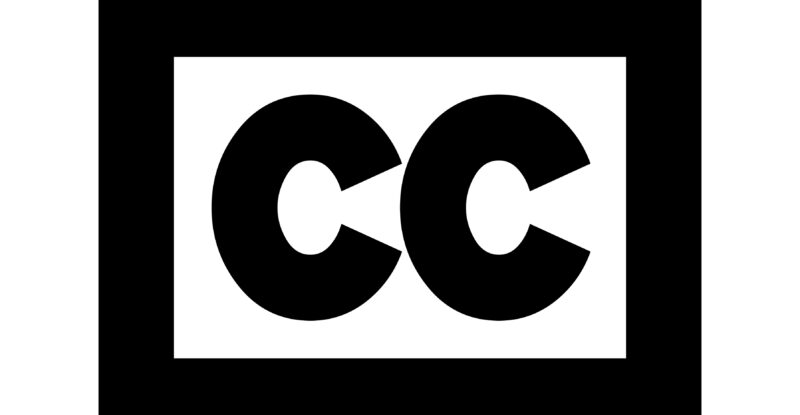One of the most hotly anticipated events at the recent APEX Technology Committee meeting in Universal City, California was the session featuring an update from several members of APEX’s Closed Caption Working Group on the results of a wide-ranging informational survey that the association submitted to its membership last fall.
Featuring input from major movie studios, airlines, content service providers, IFE hardware manufacturers and even a couple post-production service providers, the survey results were designed to give APEX a clearer picture of the current state of the IFE industry and explore the effects on stakeholders of the DOT’s pending regulations requiring closed captioning (CC) for IFE.
Unfortunately, members of the media were informed early on in the session that due to the sensitive nature of APEX’s ongoing discussions with the DOT, most of what was to be discussed was not to be reported on.
What I can tell you is that a coordinated industry approach is being sought, and the biggest stumbling blocks to that is the economic feasibility and the technological challenges of applying a set of CC rules designed to mandate content on the ground towards that in the air.
During the meeting, Bryan Rusenko, APEX’s technology consultant for the closed caption project, reviewed the results of the APEX industry survey that was to be shared with the DOT and underpin the APEX White Paper to the DOT.
“The survey provided us with a lot of helpful information,” said Michael Childers, chair of the APEX Technology Committee. “But, as such things are often wont to do it also raised a large number of additional questions. At the same time the DOT also returned to us with additional questions, and because of these two new lists of questions we now need to move our scheduled response to the DOT back from the anticipated end-of-May date to something nearer the end of the summer.”
According to Childers, Bryan Rusenko has been following up with survey respondents for clarification and additional information.
“Sometimes the way in which we framed our survey questions made them more difficult to answer – and I’ll take the blame for that,” said Childers. For example, one of the questions asked hardware suppliers what percentage of their installed hardware was analog, requiring two different versions of content files – one with burned-in captions, the other with no captions – versus an MPEG-1/2 digital platform that could support captions as a bitmap overlay. In fact, some MPEG-1/2 systems were installed without the software necessary to support bitmap overlays, thus causing such digital systems to function the same as analog with respect to captions. “Do we treat these as analog, digital, or in a separate category determined by function?”
During the Technology Committee meeting, Childers emphasized that the DOT is very interested in getting input from content providers and knowing their issues and concerns. While the Motion Picture Association of America (MPAA) is represented on the Closed Caption Working Group (CCWG) and is understood to be seeking studio input for the APEX White Paper, “we very much need to rely on content providers to use the MPAA to help us provide the DOT with a comprehensive, detailed and compelling statement of these issues and concerns.
“This is an opportunity for the content community to be heard,” he said, “and we are hopeful that we get that definitive response through the MPAA so that the position of the studios is clearly on the table.” Since MPAA represents only the six major studios, he encourages non-MPAA members from the content community to offer their input so as to be represented in the White Paper.
Another stumbling block is something called PACT. “The [Twenty-First Century] Communications and Video Accessibility Act of 2010 (CVAA) says your [closed captioning] services must be no worse than the captions that were broadcast on television. No worse? No worse how? No worse in terms of PACT: Position, Accuracy, Completeness and Timing,” explained Closed Caption Working Group member Andy Rosen, when Runway Girl Network caught up with him after the session. “Well, maintaining that PACT is not a straightforward and automatic and reliable proposition when you’re converting these materials from one format to another. The graphic design and production workflow assumptions are not at all the same.”
Another issue raised several times in the survey results is how the captions would actually look onscreen. “There seems to be a consensus of agreement here that what the DOT really wants is not pretty, it’s functional. It’s a different graphic design that calls for a different standard and a different set of workflow tools.”
Work being done at the Society of Motion Picture & Television Engineers (SMPTE) should help, according to Rosen. The SMPTE is the governing body for technology delivery standards for the entertainment industry. Apparently, great strides are already being made on a new SMPTE standard, Interoperable Master Format (IMF), that could really streamline the process of captioning IFE.
Annie Chang, Disney’s VP post-production technology and the driving force behind the development of IMF, “has made it quite clear … that volunteer contributions [from APEX members] through the SMPTE 35PM50 [group] that’s working on IMF to help define the practical subset of SMPTE TT is very welcome at this time,” he said. “And while I can’t speak for the makers of the captioning tools and services, it’s fair to say that they also welcome a coordinated, industry effort to solidify the subset of SMPTE TT that’s going to become the defacto standard for the bulk of production and post-production for mainstream entertainment.”
Reached for comment later, CC Working Group member Jon Norris, the VP of sales at Lumexis Corp, said he agreed with Rosen that an industry-wide approach was the best way to tackle the issue of closed captioning for IFE, but, that, for him personally, there were larger issues at stake.
“If you’re asking me as Jon Norris”, he says, “Personally, I think the industry has a moral obligation to see what it can do to improve the passenger experience for all passengers, regardless of if they’re physically able or disabled, etc.. You know, how expensive is too expensive, how do you put a value on that?”
“So, my personal approach is we want to go through this with an expectation that the industry can pull together and take a step forward towards a better experience for the passengers that may be deaf or hard-of-hearing. But clearly this is a potential change that impacts all elements within the value chain, and individuals, corporations have different motivations on it … [so] it will be interesting to see how the industry as a whole reacts to the challenge.”
Norris’ sentiment is certainly shared by other industry stakeholders and regulators. Senator Tom Harkin is again ramping up pressure on Capitol Hill for inflight movies to be captioned. And, while critics may harp about the airline industry being run by an army of cold, soulless “suits”, many of the APEX survey respondents’ comments revealed them to be genuinely interested in finding a way to “do the right thing” for deaf and hard-of-hearing passengers.
“Representatives of Senator Harkin’s office were on our initial telecon with the DOT and appeared satisfied at that time to leave this in the capable hands of the DOT,” said Childers.” Senator Harkin will retire at the end of his current term, and perhaps he has concerns about the extended timeline that will not see a DOT ruling until February 2015. Clearly we need to make the DOT and Senator Harkin aware that ‘it doesn’t cost anything’ is an inaccurate assumption.
“One of the issues that we are dealing with is that we have to identify, and codify in an industry spec, what the proper methodology is for the delivery of closed captions to the aircraft, and then identify the costs as accurately as possible. But there are costs. There are the costs of creating captions if none exist, and there are the costs of conforming captions that do exist to our current IFE platforms. There are costs associated with providing hardware and software with the capability of displaying captions. Unlike the broadcast environment where Line-21 is the norm, purpose-built IFE systems do not come with this capability. It has to be added. And at a cost.”
With that said, bringing CC to IFE is clearly a very complex issue and the CC Working group is eager to receive more clarity and feedback from the industry.
Featured image credited to istock.com/ricochet64











